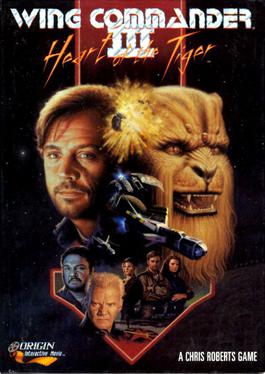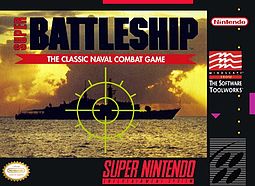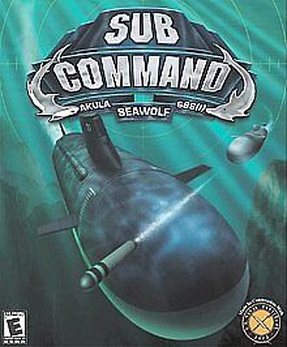Related Research Articles

The Sturgeon class was a class of nuclear-powered fast attack submarines (SSN) in service with the United States Navy from the 1960s until 2004. They were the "workhorses" of the Navy's attack submarine fleet throughout much of the Cold War. The boats were phased out in the 1990s and early 21st century, as their successors, the Los Angeles, followed by the Seawolf and Virginia-class boats, entered service.

The Seawolf class is a class of nuclear-powered, fast attack submarines (SSN) in service with the United States Navy. The class was the intended successor to the Los Angeles class, and design work began in 1983. A fleet of 29 submarines was to be built over a ten-year period, but that was reduced to 12 submarines. The end of the Cold War and budget constraints led to the cancellation of any further additions to the fleet in 1995, leaving the Seawolf class limited to just three boats. This, in turn, led to the design of the smaller Virginia class. The Seawolf class cost about $3 billion per unit, making it the most expensive United States Navy fast attack submarine and second most expensive submarine ever, after the French Triomphant-class nuclear-powered ballistic missile submarines.

Silent Hunter is a World War II submarine combat simulation for MS-DOS, developed by Aeon Electronic Entertainment and published by Strategic Simulations in 1996. The game takes place in the Pacific War during World War II, the player commanding a submarine of the United States Navy. Most contemporary US submarines and Japanese warships are featured along with some generic merchant ships.

USS Seawolf (SS-197), a Sargo-class submarine, was the second submarine of the United States Navy named for the seawolf.

USS Halibut (SSGN-587), a unique nuclear-powered guided missile submarine-turned-special operations platform, later redesignated as an attack submarine SSN-587, was the second ship of the United States Navy to be named after the halibut.

USS Cheyenne (SSN-773), the final Los Angeles-class submarine, is the third ship of the United States Navy to be named for Cheyenne, Wyoming. The contract to build her was awarded to Newport News Shipbuilding and Dry Dock Company in Newport News, Virginia on 28 November 1989 and her keel was laid down on 6 July 1992. She was launched on 16 April 1995 sponsored by Mrs. Ann Simpson, wife of Wyoming Senator Alan K. Simpson, and commissioned on 13 September 1996, with Commander Peter H. Ozimik in command. Cheyenne transferred to her homeport of Pearl Harbor, Hawaii, in 1998.

688 Attack Sub is a submarine simulator video game designed by John W. Ratcliff and Paul Grace and published in 1989 for MS-DOS and in 1990 for Amiga by Electronic Arts. A Sega Genesis version developed by MicroProse was released in 1991 by Sega.

Wing Commander III: Heart of the Tiger is the third main game in Chris Roberts' Wing Commander science fiction space combat simulation video game series, developed and released by Origin Systems in December 1994. It was a departure from previous games in the series in that it uses extensive live action full-motion video to add an interactive movie-style presentation to the space combat gameplay, emphasized by its advertising slogan, "Don't watch the game, play the movie!". The game's more than two hours of video featured a number of prominent movie stars including Mark Hamill as Colonel Christopher "Maverick" Blair, Malcolm McDowell as Admiral Tolwyn, John Rhys-Davies as James "Paladin" Taggart and Thrakhath nar Kiranka, and Tom Wilson as Todd "Maniac" Marshall.
USS Seawolf is a naval thriller published in 2000 by best selling author Patrick Robinson. It is the fourth book to feature Arnold Morgan as a main character. The second edition was published in 2005 with a new cover picture painted by Larry Rostant.

Tom Clancy's SSN is a 1996 submarine simulator of the 688i released on Microsoft Windows. The player is in command of USS Cheyenne in a limited war against China over the Spratly Islands. The gameplay is limited to a 15-mission single-player campaign in which the player carries out anti-submarine, anti-surface ship roles, intelligence gathering activities, and the launch of submarine based cruise missiles. Tom Clancy also wrote a book by the same name as a tie-in.

Super Battleship is a naval simulator video game released for the Genesis and Super NES in 1993. The game is strictly single-player and is primarily a strategy game with some real-time elements. It is based on the Battleship board game by the Milton Bradley Company.

Total Eclipse is a space flight simulation video game developed and published by Crystal Dynamics for 3DO. It was later ported to the PlayStation under the title Total Eclipse Turbo. The game was copyrighted in 1993 and released 1994. Total Eclipse Turbo was a launch title for the PlayStation in the U.S., with the game's released date predating the North American console launch by 11 days. A sequel, Solar Eclipse, was released for Sega Saturn and PlayStation.

Red Storm Rising is a simulation video game based on Tom Clancy's 1986 novel Red Storm Rising and released in 1988 by MicroProse. The player is put in charge of an American SSN submarine in the Norwegian Sea Theater with the overall role of a hunter killer performing various missions in the context of the global conflict described in the book representing a campaign. Its original Commodore 64 version was co-designed and co-programmed by the famous game designer Sid Meier.

Burning Soldier is a 1994 rail shooter video game developed by Genki and originally published by Panasonic and Pack-In-Video in North America, Japan and Europe exclusively for the 3DO Interactive Multiplayer. The first title created by Genki for the 3DO platform, the game is set in a futuristic Solar System in 2095 where a war against humanity erupts with the arrival of the Kaisertian alien race, as players assume the role of an Earth Defense Force fighter pilot taking control of the mecha-style Strike space fighter craft in an effort to overthrow the invaders and end the conflict. Its gameplay mainly consists of shooting mixed alongside full motion video with sprite-based enemies imposed on them using a main two-button configuration.

Sub Command, subtitled Akula Seawolf 688(I) is a submarine simulator computer game designed by Sonalysts Combat Simulations and published for Windows systems by Electronic Arts in 2001. The player commands one submarine: a United States Navy Seawolf, a Russian Navy Akula, or a 688(I).

Naval tactics play a crucial role in modern battles and wars. The presence of land, changing water depths, weather, detection and electronic warfare, the speed at which actual combat occurs and other factors – especially air power – have rendered naval tactics essential to the success of any naval force.

Submarine Commander is a simulation video game for Atari 8-bit computers written by Dean Lock and published by Thorn EMI Computer Software in 1982. A VIC-20 port by Gary York was released in 1983 and an Apple II version by Patrick Buckland the same year. The Atari version was re-released in 1985 on cassette on the Sparklers budget label. A version for the TI-99/4A was announced but was not released until 1986 when a third party bought the rights.

Blade Force is a 1995 third-person shooter simulation video game developed by Studio 3DO and published by The 3DO Company in North America, Europe and Japan exclusively for the 3DO Interactive Multiplayer. Set on a dystopian sci-fi future in the year 2110, where the fictional city of Meggagrid has been overrun by criminals, the player is equipped with a flight suit created by scientist Dr. Franz Grubert known as the HeliPak in an attempt to overthrow the main criminal organization led by the Pitt family and bring order back to the metropolis. Its gameplay mainly consists of shooting action in third-person with six degrees of freedom using a main five-button configuration.

Road Rash is a 1994 racing and vehicular combat video game originally published by Electronic Arts (EA) for the 3DO Interactive Multiplayer. A version for the Sega CD was developed simultaneously and released in 1995 to act as a "bridge" between the 3DO version and the Sega Genesis title Road Rash 3, and the game was subsequently ported to the PlayStation, Sega Saturn, and Microsoft Windows in 1996. The game is the third installment in the Road Rash series, and is centered around a series of motorcycle races throughout California that the player must win to advance to higher-difficulty races, while engaging in unarmed and armed combat to hinder the other racers.
References
- ↑ "Seawolf SSN-21 for 3DO". GameFAQs . CBS Interactive. 2019. Retrieved 2019-08-31.
- ↑ "Taking A Peek". Computer Gaming World. May 1994. pp. 174–180.
- ↑ Hayes, Robert L. Jr. (June 1994). "Leagues Of Its Own". Computer Gaming World. pp. 22–24.